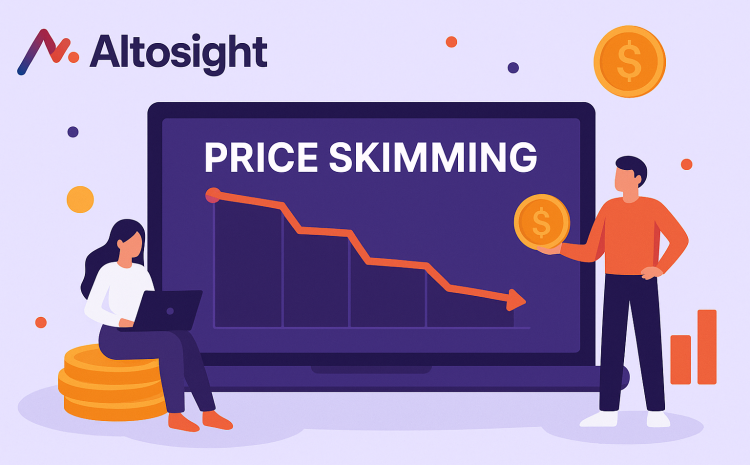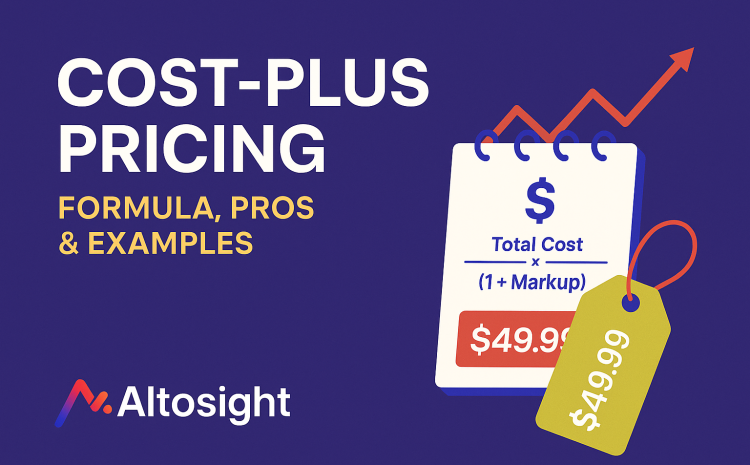
Consumers have more choices than ever, so retailers always look for ways to get a competitive edge. Everyday Low Price (EDLP) is one of the ways retailers can distinguish themselves from their competitors. This pricing strategy, made widespread by Walmart, can be cost-effective for a business and create a loyal customer base if executed correctly.
But how do you know that this pricing model is right for your business? What are the pros and cons of adopting it? Read on as we examine EDLP and show how this strategy may help or hinder your business.
What is Everyday Low Price (EDLP)?
Everyday Low Price, also known as EDLP, is a pricing strategy used by retailers and businesses to offer their customers consistently low prices on products they sell. This low-price strategy lets shoppers know that the price they see in-store or online will remain predominantly unchanged for a long time.
In an EDLP setting, businesses typically don’t run promotional offers or sale events but instead maintain one consistently low price for all of their products year-round. This means shoppers can save money on items without waiting for a sale or special discount event.
Plus, it’s easier for customers to make purchasing decisions since there won’t be any confusion over which items are discounted and when.
Everyday Low Price is an effective pricing strategy that works well for customers looking for ways to save money and businesses wanting to provide value without running complicated promotional campaigns.
Everyday Low Pricing vs. High Low Pricing
While Everyday Low Pricing focuses on maintaining one low price for products for long periods, High Low Pricing takes a more short-term approach to pricing. This pricing method starts with a high initial rate and then lowers it over time for reasons like seasons, demand, holidays, or events.
For instance, a retailer may sell a winter jacket for $800 before or during winter. But when winter is over, the retailer may drop the jacket’s price to $400. This is because many people may not feel the need to purchase a winter jacket during warmer months, which results in lower demand. As a result, retailers can lower the price of these items to appeal to more customers.
Why does it work? It works because by starting with a high price and lowering it later, shoppers feel they are getting a bargain. A shopper will naturally feel better about getting that $800 winter jacket for half the price.
And according to Blippr’s research of 5,000 online shoppers, 29% of customers will buy an item they hadn’t intended to buy if there is an attractive discount. So it is a tried and trusted tactic.
Regardless, you need to consider your brand, product category, and target audience before concluding which pricing model is best for your business.
Pros and Cons of Everyday Low Pricing Strategy
Although the Everyday Low Pricing strategy is common among many major retailers, such as Walmart, Target, Home Depot, and others, this strategy isn’t right for every business. Before deciding whether to implement an EDLP strategy at your company, examine the pros and cons.
Pros of Everyday Low Price
Easy Decision-making for Customers
Adopting Everyday Low Pricing can help you improve your customers’ experience. By offering low prices every day, your customers don’t have to spend time comparing prices across different stores or waiting for special sales. In turn, this makes for a smoother shopping experience.
Besides, people are more likely to impulse buy a low-cost product than a high-priced one. They don’t think as long about purchasing a low-cost product as they do about justifying an expensive buy. So they are more likely to make a quick purchase on the spot.
For instance, people can impulsively buy a box of cereal for $3 at their local convenience store without thinking too long about it.
Overall, a seamless shopping experience equals improved customer satisfaction, which results in repeat business/higher revenue over time.
Better Brand Engagement
Because your customers know they can expect low prices from you, they form an emotional tie to your business. They are more likely to purchase from you than your competitors because your brand gives them the confidence to buy from you.
Research by Harvard Business Review shows that customer experience directly impacts revenue. They found that satisfied customers spend 140% more than unhappy customers.
Low Advertising Cost
Retailers that use EDLP don’t need to invest much money in advertisement and other marketing tactics compared to other pricing models like High Low Pricing.
Customers already know what prices are on your website or in-store. So you can run marketing campaigns focusing on telling customers what’s unique about your brand or product rather than promotions.
It Is Easy to Predict the Demand
An EDLP strategy lets you quickly predict how many products to keep in stock. Conversely, if you follow a high-low pricing strategy, you will run irregular promotional campaigns, resulting in unstable demand and difficulties predicting demand.
Cons of Everyday Low Price
Low-profit Margins
You take discounts and some promotion methods off the table when you commit to a low-pricing strategy. You are training your customers to expect low prices from your business.
However, EDLP relies on sales volume for profitability. If you fail to achieve your target number of sales, you will have trouble increasing your profits.
Therefore, you must consider your target market and develop the ideal process for forecasting demand to achieve your business goals.
The above though can be mitigated by using price monitoring software and an automatic repricer which will make sure your prices are always competitive.
Then you can utilize price comparison websites, like Google Shopping that will drive traffic to your store.
Impact on Customer Loyalty
Before implementing EDLP, consider your customers. You must understand how they think and what matters to them.
For instance, if they are already accustomed to discounts or sales events, then adopting a lower price strategy with minimal discounts/promos could disappoint them and hurt your business in the long term.
JCPenney, in 2012, changed from its dynamic pricing model to EDLP and saw a dip in sales from customers who just wanted a deal.
Staying Competitive Can Be a Challenge
Continuously offering low pricing could lead to some customers doubting the quality of your product. For example, consumers expect certain products, such as electronics, not to be priced below a certain point.
If you offer these products below the expected value, some people may think your product is defective or simply a knock-off that doesn’t have the same quality as your competitors.
That’s why you must do your due diligence and plan your offering carefully.
Possible Depletion of Brand Image
The modern customer is detail-oriented and will hold you accountable as a company if you misrepresent your brand through your Everyday Low Pricing strategy. So before you claim that you offer the lowest prices, do your homework to confirm that you indeed have the lowest price on the market.
Any discrepancies between what your customers expect vs. what they receive will cause a loss of trust and you want to avoid that.
Price Monitoring software can help you manage your pricing strategy and ensure you remain competitive by automatically changing your prices based on the competition and your strategy.
What to Consider Before Adopting Everyday Low Pricing Strategy
Your Customers
Consider your customer base before adopting an EDLP strategy at your business. Understand the type of customers you serve. Are they bargain hunters or more focused on high-end products?
Think about it: Apple cannot adopt EDLP for the iPhone, MacBook, and other high-priced Apple products because its customers associate the brand with luxury and exclusivity.
So know your customer before implementing this strategy.
Analyze Your Brand Penetration and Products
Most companies that succeed with EDLP offer mature products requiring minimal to no marketing.
The everyday low pricing strategy is not ideal for newer or less well-known products, as they usually require significant marketing investment to gain market penetration and growth.
Therefore, you should carefully analyze your products and determine which of your products are mature enough to succeed with EDLP.
Have the Right Data
And finally, before implementing a low-pricing strategy, you should use data wisely.
You can get this data either by manually checking daily your competition and making sure you are always competitive or by using software like Altosight that lets you set prices without compromising your profits and business.
Examples of Successful Everyday Low Pricing Strategies
Walmart
Walmart is the poster child of everyday low prices. The North American retail giant offers customers the lowest prices worldwide across its over 10,000 physical stores (plus its online retail arm).
The EDLP strategy empowers Walmart’s customers to trust the retailer, purchase more and achieve higher satisfaction levels.
As a result, Walmart and its customers benefit from this strategy while maintaining a solid brand image.
Costco
Another big retailer following an EDLP strategy with remarkable success is Costco. A unique thing about Costco is that they don’t mark up their products as most retailers do.
Its business model focuses on low prices and high volumes. In essence, it sells high-volume products at low prices.
Costco customers know they’re getting a good deal, so they’re more likely to buy in bulk and stick with the store.
Tesco
Tesco is the UK’s largest retailer and operates over 7,000 stores globally. The company has fluctuated between different pricing strategies throughout its more than 100-year history but decided to switch to EDLP in 2016 (and with remarkable success).
While maintaining a low price for its products and services, the company does not compromise quality. As a result of economies of scale, Tesco benefits from price reductions by continuously improving supply chain efficiency with its suppliers.
Because of this, the brand enjoys a highly competitive position in the grocery market and has a loyal customer base.
Wrap Up
The Everyday Low Pricing (EDLP) strategy is a pricing model that helps retailers attract more foot traffic (or online traffic) by offering low prices every day. Applied correctly, this can lead to increased customer satisfaction and repeat business.
However, it has disadvantages, like low-profit margins and difficulty staying on top of your competition. So you must analyze your target market and define the ideal pricing strategy to keep customers happy while achieving your business goals.





